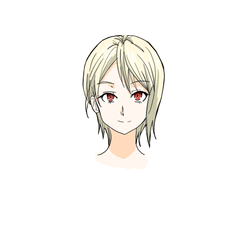How to make Escher-like tilings
Isohedral tiling
Isohedral tilings or tessellations contain a repetitive structure created from a single possibly rotated shape that is placed over a plane with no gaps or overlaps. Some of the most famous isohedral tessellations are included in Escher's "Regular Division of the Plane" drawing series.
The IH templates
To create an isohedral tiling, we can start from a template made with triangles, quadrilaterals, pentagons, or hexagons. There are 93 possible templates in total, known as IH1~IH93 in the mathematical world. You can easily look up all of them on the internet. In this tutorial, I will show a few ones and give you some intuition about the rules and restrictions when drawing a new tiling.
The three rules
Here we can see the IH47 template, which contains several rows of parallelograms. The "F" mark indicates the orientation of the tile. If we assign arrows and labels counterclockwise to a parallelogram, we can deduce what kind of deformations we may apply by following three rules.
Rule 1: If two adjoining edges have different labels, you can apply any deformation to them. For example, the edges between arrows "a" and "c" satisfy this condition.
Rule 2: If two adjoining edges have the same label and arrows with opposite directions, you can only apply deformations with central symmetry (point reflection). For example, edges "b" and "d" satisfy this condition.
Rule 3: If two adjoining edges have the same label and arrows in the same direction, you cannot apply any deformation. Normally you will not use templates that satisfy this condition.
Our first tiling
Let's create a tiling using the IH47 template that I explained in the previous section. First of all, we create a new document with the dimensions and resolution that you prefer.
Next, we can use the rectangle tool to create the template grid. You can create an initial rectangle, duplicate it and move it, or use Clip Studio's grid.
Next, we draw the silhouette as we did in the previous section. Remember that each edge deformation must follow the three rules. Also, make sure that your silhouette crosses the corners.
In the next step, I added some internal lines to make the tile look like a bird.
Finally, in step 3, I added some colors.
Next, we just need to move and rotate the tile according to the template's "F" marks. Normally you would only change the colors of the tile, but in this case, I went a bit crazy.
Repeating the pattern will lead to the final tiling.
Let's try again with the IH31 template
The IH31 uses quadrilaterals as well, but they have a kite shape and form clusters like this template.
We can see that all edges satisfy rule number 1, and therefore we can introduce any deformation. For instance, here is the silhouette of the tile I created.
Next, we just need to move and rotate the tile according to the orientation of the "F" marks in the template.
Finally, we add some simple colors.
Let's go hexagonal
In this section, we will use the IH7 template that uses hexagons. To create the hexagons you can use the polygon tool. I added visibility to some extra settings such as "Start from center" for convenience.
The IH7 looks as follows. As you see all edges satisfy rule number 1 and therefore we can use any deformation to create the master tile.
After a few tries, I got to this silhouette and applied a few colors. Animals are a recurrent motif in this kind of tilings.
Next, we just need to move and rotate the master tile according to the "F" marks in the template. Duplicate the master tile, press "Ctrl-T" (Edit > Transform > Scale&Rotate) and specify the "Rotation angle". Then move it to the corresponding position in the template.
Here is the final result. A bit more Escherian than the previous tilings isn't it?.
One more and we finish
Continuing with the hexagons, in this section, we will use the IH1 template to create a new tiling. This template is quite easy because all tiles have the same orientation and all edges satisfy rule number one.
Here is the tile I created. Yes, you guessed it. This is the tiling in the tutorial's cover.
And here is the final result.
Registering your tilings as reusable materials
Once you have created all your patterns, register them into Clip Studio Paint as seamless materials. To do that we first enable the grid and use the rectangle selection tool to specify the portion to register.
Next, we click on "Edit > Register material > Image" and we get the following menu. Check the "tiling" box and select a folder to store your material.
To reuse your registered material, create a selection with the lasso tool and just drag and drop it from your folder.
Voila! You can now use your Escher-like patterns (Isohedral tilings) quickly in your designs and artworks.
Conclusions
To create Escher-like tilings follow the next steps:
1) Choose one of the 93 different IH templates. There are several sites and books describing them in more detail.
2) Create the template and assign arrows and labels to the master tile in a counterclockwise direction.
3) Check the three rules to understand the restrictions you have when applying deformations to the edges (that is when drawing the silhouette)
4) Once you have your master tile, duplicate it and place it over the canvas according to the template.
5) Register your pattern as a new material in Clip Studio Paint.
Happy tiling!!
Follow me on Instagram:
























コメント